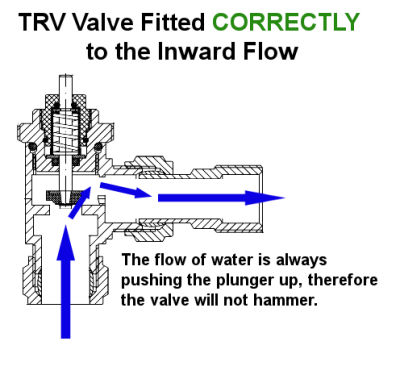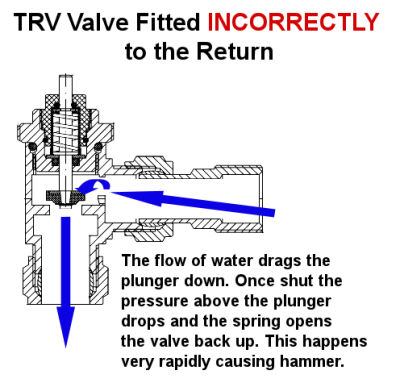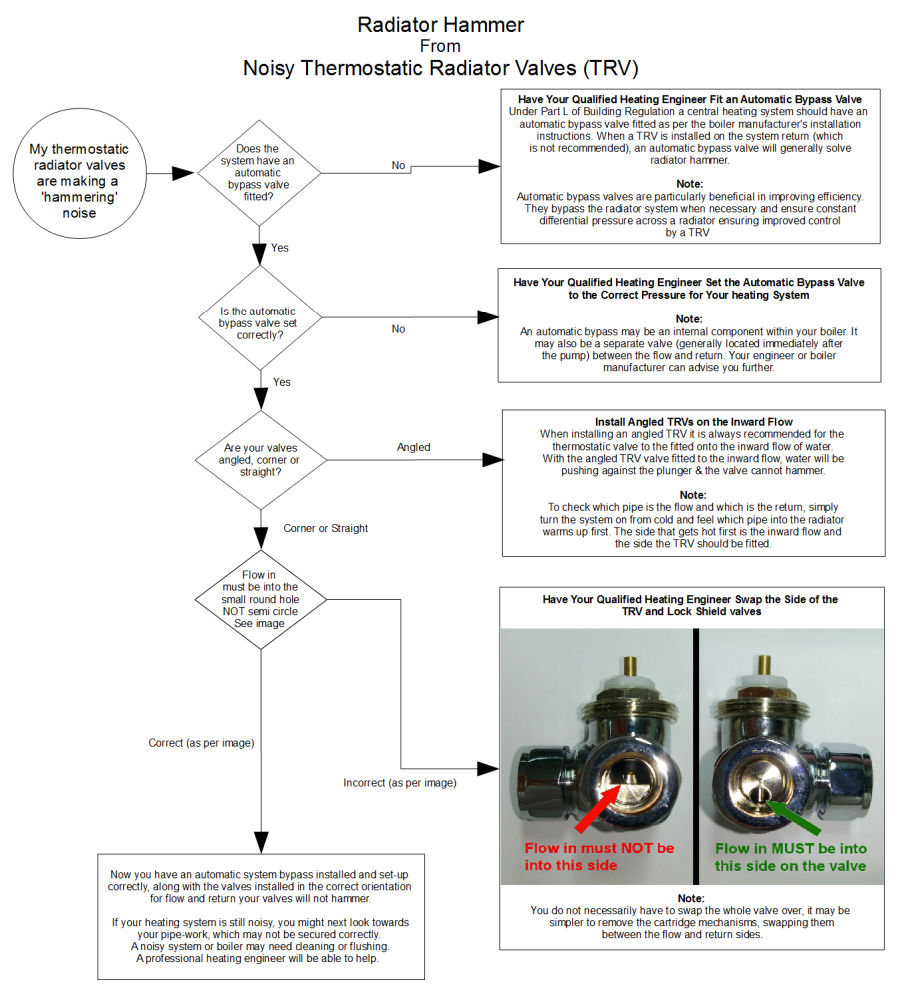How is "Radiator Hammer" caused?
1st Jul 2021
How is Radiator Hammer Caused?
Radiator valve hammer is caused by a high velocity of water dragging down the spring loaded plunger of a TRV (thermostatic radiator valve). The return spring in the plunger will always try to lift the mechanism and if the water flow is strong enough, it will try to drag the plunger down. At the point where the two forces are almost equal, the plunger will rapidly move up and down causing radiator hammer.
System Automatic Bypass Valves - How Can They Help?
An automatic bypass valve will help control the system pressure differential, effectively reducing water velocity in the system by routing water directly back to the boiler, rather than increasing pressure and water velocity within the heating circuit. Reduced water velocity means that the water flow is never too strong to drag the TRV plunger down, potentially causing radiator valve hammer. Fitting an automatic bypass valve and ensuring it is set and functioning correctly is the first step to take when dealing with this issue.
Flow & Return Pipes - Where Should the TRV be Fitted?
If the thermostatic valve is fitted to the inward flow (rather than the return pipe) the water will always be pushing against the plunger, thus avoiding radiator hammer. If the TRV is fitted to the return pipe, high velocity water leaving the radiator can drag the plunger down causing hammer noise in the radiator valve.



